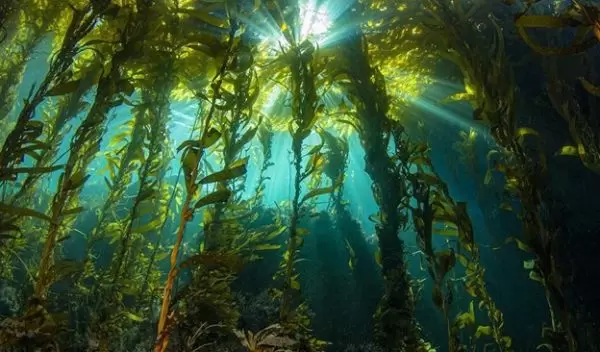
Nutritional value of giant kelp decreases as ocean temperatures increase
Giant kelp, or Macrocystis pyrifera, is vital to the temperate, shallow, nearshore waters where it grows. When the kelp flourishes, so do the communities that rely on the fast-growing seaweed for food and shelter.
Giant kelp has proven resilient, so far, to some stressors brought on by climate change, including severe storms and ocean heatwaves -- encouraging the alga's ability to maintain the legions of fish, invertebrates, mammals and birds that depend on it for their survival. But in a recent study published in the journal Oikos, researchers at University of California, Santa Barbara and other institutions reveal that giant kelp's ability to take a temperature hit may come at the cost of its nutritional value.
"The nutritional quality, or the amount of nutrients in kelp tissue, seems to be changing," said the study's lead author Heili Lowman, a biogeochemist at the University of Nevada, Reno. "We found that these changes were associated with seawater temperatures. From a big-picture standpoint, that's pretty important because there are a lot of things that rely on kelp as a primary food source."
The findings come from long-term data gathered at the U.S. National Science Foundation-supported Santa Barbara Coastal Long Term Ecological Research site, which encompasses kelp forests in the Santa Barbara Channel. Thanks to data collected over almost two decades, researchers have been able to track patterns of nutrient content, which fluctuate seasonally, and identify significant trends.
"Discovery of the decreasing nutritional content in giant kelp highlights the value of long-term, placed-based research that's made possible by NSF's LTER program," said Dan Thornhill, a program director in NSF's Division of Ocean Sciences.
The decline in nutritional content does not bode well for the consumers of kelp in and around the Santa Barbara Channel, including sea urchins and abalone, as well as intertidal beach hoppers and other invertebrates that consume the kelp wrack that washes up on the shore.


